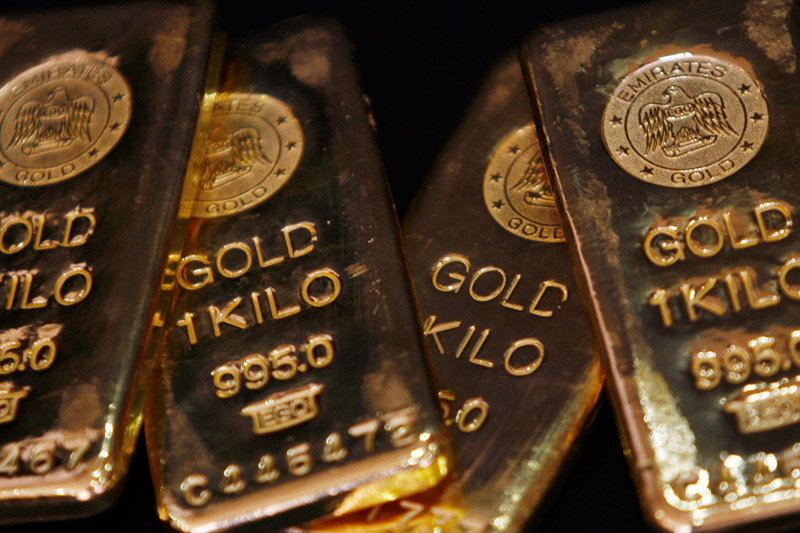Investing.com - Gold prices extended losses from the prior session in European trade on Monday, holding near a three-week low as the U.S. dollar hovered at a more than four-month high amid renewed expectations for a Federal Reserve rate hike later this year.
Gold for August delivery on the Comex division of the New York Mercantile Exchange fell to a session low of $1,313.10 a troy ounce, just above a three-week low of $1,310.70. It last traded at $1,324.50 by 06:52GMT, or 2:52AM ET, down $7.00, or 0.53%.
On Friday, prices lost $7.60, or 0.57%, as renewed expectations for a Federal Reserve rate hike later this year boosted the U.S. dollar and as investors looked to buy into rising equity markets rather than purchasing safe-haven assets.
The yellow metal declined $4.40, or 0.26%, last week, the second weekly loss in a row.
A recent string of better than expected U.S. data reignited speculation that the Fed will raise interest rates before the end of the year. Interest rate futures are currently pricing in a 45% chance of a rate hike by December, compared with less than 20% a week ago and up from 9% at the start of this month.
The U.S. central bank is not expected to take action on interest rates at the conclusion of its two-day policy meeting on Wednesday, as policymakers wait for the dust to settle from Britain's decision to leave the EU. But market players will scrutinize the Fed's policy statement for fresh guidance on the pace of interest rate hikes over the next several months.
Gold is sensitive to moves in U.S. rates. A gradual path to higher rates is seen as less of a threat to gold prices than a swift series of increases.
The U.S. dollar index, which measures the greenback’s strength against a trade-weighted basket of six major currencies, rose to 97.59 on Friday, a level not seen since March 10. It was last at 97.47 early Monday, boosted by the diverging monetary policy outlook between the Fed and other global central banks.
A stronger U.S. dollar usually weighs on gold, as it dampens the metal's appeal as an alternative asset and makes dollar-priced commodities more expensive for holders of other currencies.
The yellow metal remained supported amid speculation central banks in Europe and Asia will step up monetary stimulus in the next few months to counteract the negative economic shock from the Brexit vote.
Gold is up almost 25% for the year to date, boosted by concerns over global growth and expectations of monetary stimulus. Expectations of monetary stimulus tend to benefit gold, as the metal is seen as a safe store of value and inflation hedge.
Prices surged to a more than two-year high of $1,377.50 earlier in July, as concerns surrounding global growth in wake of Britain’s vote to exit the European Union sent investors flooding into safe haven assets.
